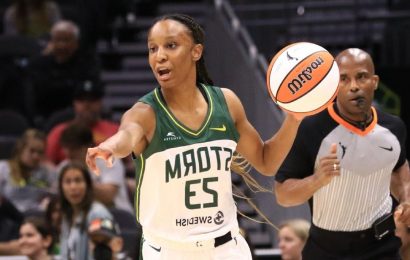The agreement splits the Big Ten’s sports between Fox, NBC and CBS, and is the richest annual deal for any college sports league.
Send any friend a story
As a subscriber, you have 10 gift articles to give each month. Anyone can read what you share.
By Alan Blinder and Kevin Draper
The Big Ten Conference has reached the richest-ever television agreement for a college athletic league, selling the rights to its competitions for an average of at least $1 billion a year.
The seven-year arrangement cements the Big Ten as one of the nation’s pre-eminent college sports leagues, but it promises to fuel the intensifying debate over how universities should treat athletes who are not paid salaries.
The deal, which reflects television networks’ desire to capitalize on America’s enormous appetite for sports, comes at a time of extraordinary upheaval in college athletics. The college sports industry has faced setbacks in statehouses and courtrooms, including one at the Supreme Court in 2021 that made it more vulnerable to antitrust challenges. And college sports’ diminished political influence has helped empower athletes to speak out against longstanding rules, like the ones that until last year had kept them from making money off their fame.
In turn, administrators and coaches have grown anxious as they watched their control ebb and the economic dynamics start to change.
Now the Big Ten is borrowing from a strategy that the N.F.L. has relied on to become North America’s wealthiest sports league and will split football games among multiple broadcast networks, with Fox, CBS and NBC each armed with sought-after time slots.
Beyond transforming the Big Ten into a powerhouse of football scheduling, the contract’s sheer value will give the league and its members a measure of stability in the years ahead. The conference’s expiring agreement is worth about $2.6 billion over six years; the new arrangement will take effect next July.
The Big Ten’s deal calls for Fox, the dominant shareholder in the Big Ten Network, to have many of the signature football games from a league that already includes 14 universities, including eyeball-drawing brands like Michigan, Ohio State and Penn State, and will add Southern California and U.C.L.A in 2024. Fox will also air games on the Big Ten Network and FS1.
But unlike the Southeastern Conference, which signed its rights over to Disney and its web of platforms, including ABC and ESPN, the Big Ten elected to reach agreements with broadcasters beyond Fox.
CBS, whose long relationship with the SEC is nearing its end, will ultimately fill its Saturday afternoon time slot known for matchups from Southern football havens with games from Big Ten hot spots like Nebraska and Wisconsin.
NBC will choose a Big Ten contest to broadcast, often in prime time, and broaden its college sports offerings beyond the Notre Dame home games it already airs under a separate deal directly with the university. Peacock, NBC’s streaming platform, will also show Big Ten games.
“The Big Ten will be on network television from noon on most Saturdays to 11 o’clock at night, which is unheard-of,” said Sean McManus, the chairman of CBS Sports, who added that he had been drawn to the Big Ten as “a truly national conference,” even before the planned additions of U.C.L.A. and U.S.C.
Although the Big Ten did not announce specific financial terms, four people with knowledge of the negotiations described the contracts, speaking on the condition of anonymity to discuss confidential talks.
In addition to football, the contracts cover men’s and women’s basketball and all other sports sponsored by the conference, including baseball, softball and volleyball.
Football, though, drove the negotiations. With Fox plainly positioned to remain the Big Ten’s central broadcast partner, the jockeying centered around how other media companies might split the conference’s portfolio.
“When you have multiple partners, it’s like having multiple siblings: There’s a certain amount of healthy competition,” Kevin Warren, the Big Ten commissioner, said in an interview about talks that also included Amazon, Apple, ESPN and WarnerMedia, which merged with Discovery this year.
No platform’s absence from the deal is more striking than ESPN’s: The broadcaster has been tied to the Big Ten since Ronald Reagan’s presidency, and it has outsize influence over popular perceptions of American sports. But Disney, which controls ESPN, balked at the Big Ten’s proposed terms and will instead showcase other top leagues like the SEC and the Atlantic Coast Conference.
Although universities make money from sports in myriad ways, their most important athletic revenue source is broadcasting rights. Conferences generally handle the negotiations — the National Collegiate Athletic Association is in charge for national postseason basketball — and distribute money to their member schools.
Less than 20 years ago, Big Ten schools were splitting less than $200 million in media rights money annually when adjusted for inflation, according to a database run by the Knight Commission on Intercollegiate Athletics and Syracuse University.
The surges in revenue in college sports have sparked more open discussions about whether players should receive a cut. Jim Harbaugh, the Michigan football coach, said last month that the Big Ten should consider sharing television money with athletes. The league has made no move in that direction, and, like other college sports organizers, it has resisted calls to classify athletes as employees.
Source: Read Full Article










